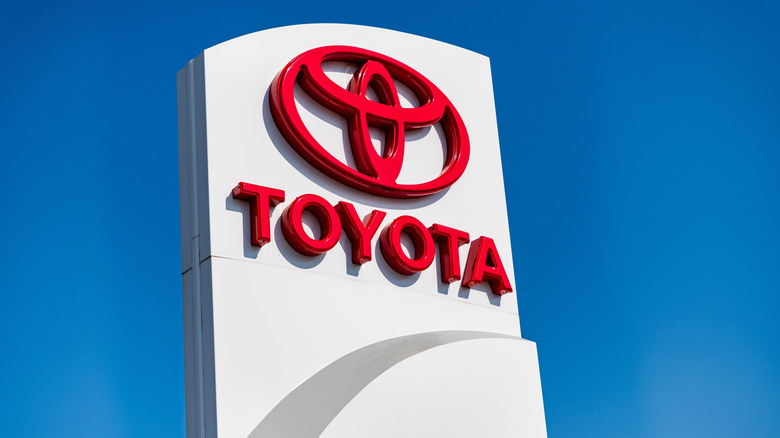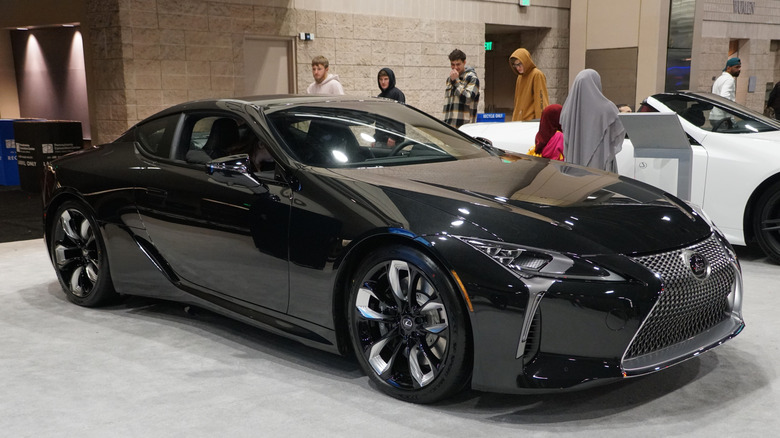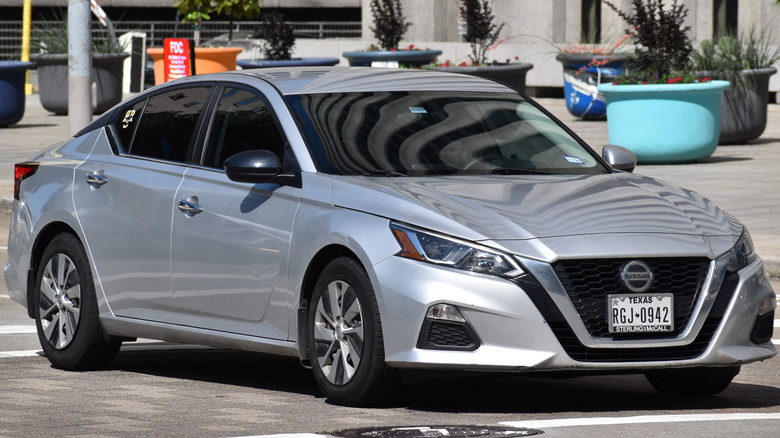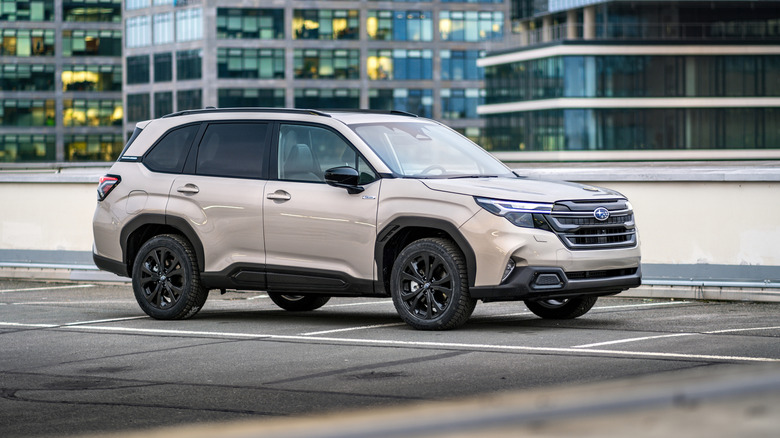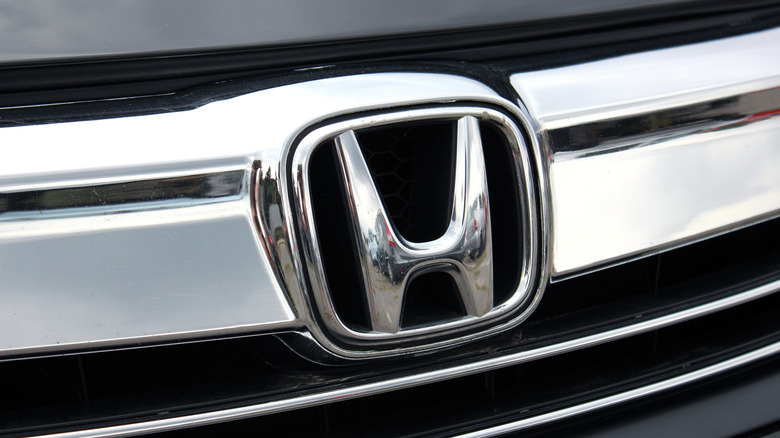5 Car Brands That Use CVT Transmissions
A CVT — or Continuously Variable Transmission — is exactly what it says on the tin. Traditional gearboxes use several differently-sized cogs that mesh together, using the principles of physics. Your engine drives the cogs, and the cogs transfer power to the wheels. When you press the clutch pedal, these two shafts disconnect from each other, and then you (or the car's computer) can safely move the gear lever up or down, and this will change which cogs are meshing, which in turn will change the speed your car is moving at. Now, these cogs are deliberately different sizes. For higher gears, a small cog drives a larger one, providing less torque but higher speed capability, while lower gears reverse this relationship for maximum pulling power. The size difference is known as the gear ratio, which changes from manufacturer to manufacturer, and that's how a regular transmission works.
A CVT, on the other hand, consists of two pulleys joined together by a belt. These two pulleys can increase or decrease their width, and along with that, the width of the pulley belt. This has the same effect as a different-sized gear driving another cog, only this time, the ratio between the two pulleys is your gear ratio. CVTs are supposed to have better economy than an automatic transmission, but this remains a point of contention. Now that you know what a CVT is, let's look at five brands in the U.S. that use them widely in automobiles.
Toyota
Yes, the world's most popular car brand has shifted a lot of its most popular models to CVT gearboxes. Toyota models with CVTs include the Highlander Hybrid, Sienna Hybrid, Prius, Crown, and some variants of the Corolla and Camry. Now, that's by no means a comprehensive list of every Toyota model with a CVT transmission, but you get the idea – a lot of Toyota cars are now coming with CVTs. And even with cars that come with regular transmissions, the hybrid versions of those cars will probably be rocking a CVT, though this move makes sense. After all, the entire point of a hybrid vehicle is to be more efficient, and if CVTs have one thing going for them, it's that they are efficient.
Toyota actually began its shift to CVTs more than 25 years ago, when the 2000 Toyota Opa became the first Toyota car to come with the K110 gearbox. Also, since Toyota is aiming to be a hybrid-only brand, and it is equipping most of its hybrid cars with CVTs, it's not too hard to put two and two together. As a result, it's logical to expect that most Toyotas in the near future will have CVTs, except for models like the Land Cruiser that still need that rugged off-road durability. All in all, CVTs still have a long way to go to prove themselves, but if there's ever a brand that can make CVTs reliable and mainstream, it's Toyota.
Lexus
If Toyota is making a move to CVTs, it's only logical that its luxury division, Lexus, would follow suit — and following suit it is Currently, the LC 500h, NX350h, PHEV NX 450h plus, LS 500h, ES 300h, UX 200, and the RX 450h all come with a continuously variable transmission. It's clear that the Toyota Automotive group is heavily leaning into CVTs and betting on their success, though with the reputation CVTs have gotten, the move seems to be for the worse rather than for the better. However, it's worth mentioning that Lexus' top-of-the-line LX-series, including the LX570, LX 600, and LX700 series still come with a regular transmission as these, despite being uber-luxury vehicles, are still intended to be off-road capable.
That said, it does seem like Lexus is going down the hybrid-heavy route, which will likely mean that its CVT usage is only going to increase. Also, with so many different types of CVTs on the market today, even within companies, it is easy to get confused as to whether or not a car comes with a CVT. One easy trick is just to look at the transmission details. If it says anything like eight-speed or six-speed transmission, then you know that you have a conventional gearbox. CVTs, by definition, do not have fixed ratios, so they cannot have a designated number of speeds available. If you didn't know, now you know.
Nissan
Chances are that if you've heard the words Nissan and CVT in the same conversation, it's about Nissan getting sued in a class action lawsuit. The case was filed on behalf of people who own various Nissan models purchased recently, including the Murano and Maxima. That's how infamous Nissan CVTs have become in the U.S. The case was settled in May 2025, though a final hearing is scheduled for July 18th at the time of writing, and the verdict is anything but consumer-friendly. Four plaintiffs will receive $5,000, Nissan will extend the CVT warranty in America on certain models, and the lawyers walk to the bank with $3.5 million. Also, people who had two or more transmission failures can either apply for cost reimbursement or opt in for a $1,500 discount on any new Nissan or Infiniti vehicle — but not both.
Currently, Nissan ships quite a number of cars with its Xtronic transmission — that's what Nissan has named its CVT — including but not limited to the Kicks, Versa, Rogue, Sentra, Murano, and Altima. Again, that's not a comprehensive list of Nissan cars that come with a CVT, but you get the point – a lot of Nissan's best-selling models are now coming with CVTs, and have been for some time. This situation is not ideal, as Nissan CVTs are known to have lots of common problems like overheating, shuddering, and whining, so do your research if planning a purchase.
Subaru
Subaru calls its CVT the Lineartronic gearbox, and equips most of its lineup with it. Current Subarus that come with a CVT include the Crosstrek and its assorted hybrid models, the WRX, Legacy, Impreza, Ascent, and the Forester and Outback SUVs. As a matter of fact, this means that only three Subaru models come without a CVT in 2025, and those are the BRZ, which comes with a six-speed manual, the WRX, which comes with either a six-speed manual or an eight-speed automatic, and the Solterra, which is an EV without a transmission. Subaru is so confident in its CVT that all eight Ascent trims, all nine trims on the Outback, several trims on the Forester, and all five trims on the Crosstrek offer CVTs.
And when we say most trims on the Forester, we mean that all Foresters also come with a CVT, it's just that certain trims have a seven or eight-speed manual mode — if that counts. Also, this CVT business with Subaru has been around for a decade, since Subaru has offered a CVT on every single model that had an automatic gearbox from 2014 onwards, with the exception of the BRZ, of course. However, it's not all doom and gloom, as the Impreza does happen to be one of the fastest cars with a CVT transmission that's currently on the market — which goes to say that perhaps Subaru hasn't lost its edge when it comes to making a family car go fast.
Honda
Lastly, we have yet another Japanese brand on our list — Honda. Today, many Honda models come with CVTs, some of which are the Accord and related hybrids, Civic, CR-V and related hybrids, and the HR-V. This is in keeping with the trend that's taking over the industry, whereby some of the best-selling models that prioritize efficiency over reliability are switching to continuously variable transmissions, while those models that have a reliability tag, so to speak, are retaining traditional automatic gearboxes. You see, all of these CVT Hondas are extremely popular models here in the States, with 162,723 Accords, 242,005 Civics, 402,791 CR-Vs, and 138,911 HR-Vs having been sold for the 2024 to 2025 model year alone. The Accord sales figure is particularly noteworthy as it's actually a decline from 2023, when Honda sold 197,947 Accords.
Honda was actually one of the first companies to notice the potential that CVTs hold, even before the 2000 Toyota Opa, as the first Honda that came with a CVT was the 1995 Civic. Examples of some Hondas that still come with a regular automatic (or manual) transmission are the Pilot, Ridgeline, Passport, and Civic, to name a few. Note: only the topmost two variants from the Civic lineup get manual transmissions in 2025, and there's no telling how long that'll last. It seems the death of the stick shift is well and truly upon us.

